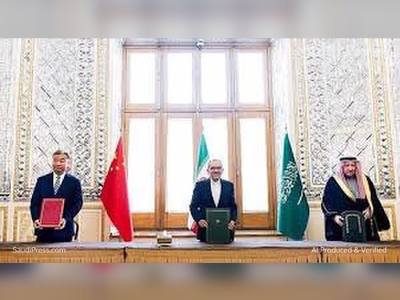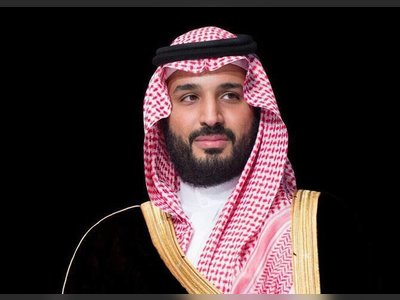
EXCLUSIVE Britain and Japan aim to merge Tempest and F-X fighter programmes-sources
It would be the first time Japan has sought a non-U.S. partner for a large military programme and the first major collaboration between Tokyo and London, going beyond what had been expected when industrial talks began five years ago.
"This would be an equal partnership between Japan and Britain," said one of the sources with knowledge of the plan. It will cost tens of billions of dollars, he added.
The push to combine the Japanese F-X programme, led by Mitsubishi Heavy Industries (MHI) (7011.T), with Britain's Tempest, managed by BAE Systems PLC (BAES.L), by December has not previously been reported.
The sources asked to remain anonymous because they are not authorised to speak to the media.
"The main thing that we are aiming for is to build a common jet, that may have small differences in design for each country," said another of the sources.
Britain could handle exports in Europe, while Japan would take care of the Asian market, another of the three sources said.
Collaboration would spread development costs, while exporting would increase production lots and reduce the price per plane, helping both countries stretch their defence budgets.
It would represent a deepening of security ties between the two close U.S. allies. London is taking on a bigger military role in Asia under a strategic "tilt" towards the Indo-Pacific, and Tokyo is expanding defence cooperation beyond Washington.
Japan's policy, pushed by the late former Prime Minister Shinzo Abe to strengthen Tokyo's hand against neighbouring China, has taken on new urgency following Russia's invasion of Ukraine, which Moscow describes as a "special operation."
The switch to a European partner comes as Japan's defence spending rises, with the budget expected to double over the coming decade as Prime Minister Fumio Kishida sticks with Abe's national security agenda and fulfils an election pledge to "substantially" increase military outlays.
"We would like to decide how we can cooperate by the end of this year, and are considering various possibilities," Japan's defence ministry said.
Britain's defence ministry had no immediate comment. The country's air force head, Air Chief Marshal Mike Wigston, told a conference on Thursday that Britain is "exploring partnering opportunities and sharing our technological expertise with a range of international partners, including Japan and Italy".
MHI and BAE declined to comment.
Britain plans to give an update on Tempest at next week's Farnborough Airshow, another source said, without elaborating.
OPENING FOR EUROPE
Japan's partnership with Britain is a chance for BAE and other European Tempest companies, such as Rolls-Royce (RR.L), missile maker MBDA and Italian defence group Leonardo (LDOF.MI) to tap a growing market long-dominated by U.S. companies.
Efforts to merge the fighter jet projects follow deepening co-operation between the UK and Japan in recent years from the JNAAM missile project to sensor work and a deal to develop an engine demonstrator.
"You can see the direction of travel," said Douglas Barrie, senior fellow for military aerospace at think-tank IISS.
It is more than 20 years since MHI, maker of the World War Two-era Zero fighter, and U.S. defence group Lockheed Martin Corp built Japan's F-2 fighter, a short-winged derivative of the F-16 Fighting Falcon.
Lockheed, which later developed the F-35 stealth plane, had also been expected to help MHI build the F-X, an F-2 replacement, which Japan wants to deploy in the 2030s to counter advanced fighters from China.
The programme cost of developing the F-X is estimated by Japan defence ministry officials at around $40 billion, $700 million of which has been allocated this year, making it a lucrative proposition for Japanese companies that lost out as Tokyo bought American kit, including the F-35.
The BAE-led Tempest project to field a replacement for the European Typhoon combat jet has a government budget of 2 billion pounds ($2.38 billion) until 2025, when full development is slated to start.
It is one of two European initiatives for the next generation of air power alongside the Franco-German-Spanish Future Combat Air System, currently mired in divisions between partners Airbus (AIR.PA) and Dassault Aviation (AM.PA).
Lockheed, in 2018, had proposed using an F-22 Raptor airframe and F-35 components for the F-X, but that tentative partnership ended this year because U.S. control over the sensitive technology meant Washington could say when and how Japan maintained and upgraded its planes, the sources said.
A Lockheed spokesperson said questions about the programme should be referred to the Japanese government.
For Japanese companies, which were banned from exporting weapons overseas until 2014, the partnership is a chance to access foreign markets and European technology with potentially fewer restrictions than those imposed by Washington.
Tempest "is a flexible construct that lends itself to multiple forms of cooperation," said defence analyst Francis Tusa.
The fighter will still need some U.S. components, such as for communications and data links, to ensure interoperability with U.S. forces.
As talks in Tokyo and London push ahead, it is still unclear what role, if any, the Swedish and Italian governments will have in the new project after agreeing to collaborate on Tempest.











